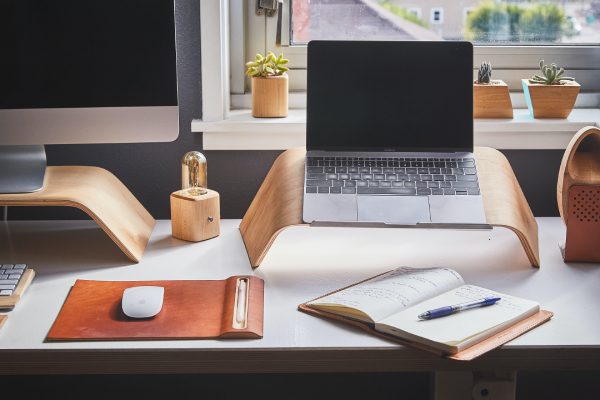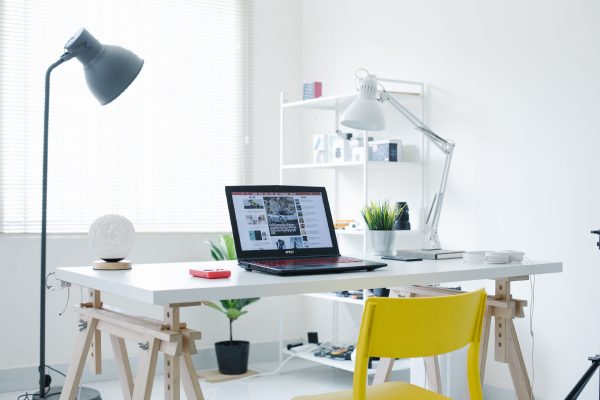Setting Up for Productivity: Tips for Building a Home Office
It’s always good to aim to improve your productivity, but it’s especially important if you’re working from home. After all, it can be quite a challenge to accomplish office work while you’re frequently exposed to the comforts of your home and your domestic responsibilities. More than just adopting a results-oriented mindset, though, you can set yourself up for success by building a home office that is conducive to productivity.
By changing your environment to suit your professional tasks, you’ll have an easier time enhancing your concentration, reducing your stress levels, and ultimately getting more work done. If you’re in the process of setting up an office at home or considering getting the services of custom cabins Tauranga builders to construct a separate office, check out these tips on how to create a space that will enable you to attain productivity:
Create a Dedicated Workspace
It’s essential to establish a clear boundary between your professional and personal life, especially since you’re working away from a traditional office. The lack of division between professional and personal chores can lead to difficulties in mentally switching between work and leisure. Thus, it’s crucial to designate a specific area for work. For starters, choose a quiet and secluded space for your remote office to minimise distractions.
If you don’t have a spare room in your home, perhaps you can build a small cabin that will specifically serve as your remote office. This way, there’s physical distance between your personal and professional spaces. Then, set up a desk and chair in this area to mark it as your work zone. Avoid working from your bed or couch, too, as this can blur the lines between relaxation and work.

Maximise Natural Light
Choose a position that is near windows and has easy access to plenty of natural light. If you’re planning on a cabin to serve as your home office, make sure that it has well-placed windows that let in plenty of light. Aside from brightening up the space, natural light also plays a significant role in boosting mood and alertness. So, when setting up your workspace, consider the direction of natural light throughout the day.
Arrange your desk so that it receives ample sunlight without causing glare on your computer screen. Be cautious of excessive glare, however. Avoid placing the desk with its back to the windows as this can lead to screen glare, and use curtains or blinds to control light intensity when needed.
Invest in Ergonomic Furniture
Ergonomic furniture can be pricey, but they are a key investment for a comfortable and health-conscious home office. Simply put, your chair and desk should support good posture to prevent discomfort and potential health issues down the road. When selecting furniture, consider adjustable features to suit your specific needs.
Also, test each piece of furniture that you intend to buy for your home office before finalising the transaction. For chairs, ensure that your feet can rest flat on the floor; for your computer screen, it should be at eye level to reduce strain on your neck and eyes. As much as possible, refrain from using generic or low-quality office furniture that may not cater to your body’s unique requirements.
Optimise Technology Setup
Optimising your computer setup is crucial for a smooth workflow, too. Start by testing your internet speed to ensure it meets the demands of your work. This is particularly important if you conduct plenty of video calls or need to transfer large files often to accomplish your everyday tasks.
Organise your desk to accommodate your computer, keyboard, and mouse comfortably. Keep cables tidy to prevent tripping hazards and maintain a neat appearance. To make sure you’re ready for potential service disruptions, prepare a backup internet connection. It also makes sense to regularly maintain your devices so that they can reliably get work done while you’re on the clock.

Declutter Your Space
A clean and organised workspace is a foundational step in productivity, especially in a home office. Don’t underestimate the importance of a tidy environment in maintaining a clear mind for work. Indeed, clutter can be distracting and can negatively impact your ability to focus.
After building your cabin, clean up the space and its surroundings thoroughly. While you’re setting up your workstation, remove unnecessary items from your desk and the immediate vicinity. Invest in storage solutions like shelves or organisers to give each of your tools its proper space, too.
Personalise with Plants
Adding indoor plants to your home office in New Zealand is a practical way of enhancing aesthetics and creating a positive, calming atmosphere. Choose low-maintenance plants that are suitable for indoor environments, such as succulents, ficuses, or snake plants.
Position them strategically around your workspace to improve air quality and create a sense of nature indoors. To keep your indoor greenery healthy, avoid overwatering as this can lead to root rot. Also, if you lead a busy lifestyle or frequently take care of demanding tasks, steer clear of high-maintenance plants that may distract you from work.
Use Task Lighting
Often, overhead lighting is not sufficient for more detailed tasks. To solve this issue, incorporate focused lighting, such as desk lamps, into your desk setup or remote office cabin. Doing so can help in reducing eye strain and creating an optimal work environment.
Position these light fixtures so that they illuminate your workspace evenly and prevent shadows or glare on your screen. Also, choose LED or natural light bulbs to mimic daylight and reduce the strain on your eyes. Be mindful of using lights with a colour temperature too different from natural light as well, as this can lead to discomfort.

Implement Sound Solutions
It’s essential to minimise auditory distractions for a focused home office. Use noise-cancelling headphones to block out external sounds or distracting ambient noise. You can also play background music to create a conducive work environment.
Choose music without lyrics to avoid disturbing your train of thought, but be careful to monitor the volume level to prevent hearing damage. Through the strategic use of sound solutions, you create a more controlled auditory environment and enhance your ability to stay focused and productive.
Implementing these tips will help you create a home office that is not just comfortable but also conducive to productivity. Tailor these suggestions to fit your specific needs and preferences, and you’ll be well on your way to establishing a highly efficient remote work environment.
